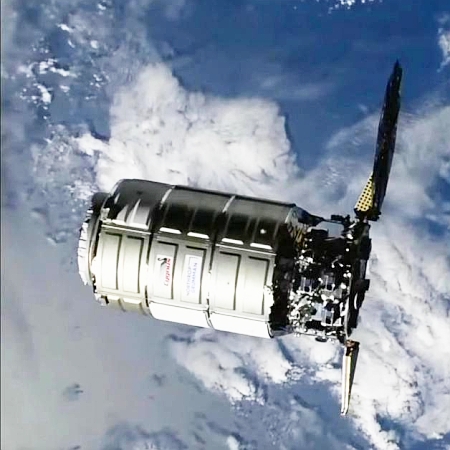SpaceX launches Northrop Grumman’s Cygnus capsule to ISS
SpaceX today for the first time launched a Northrop Grumman Cygnus cargo freighter to ISS, its Falcon 9 rocket lifting off from Cape Canaveral.
The first stage completed its 10th flight, landing back at Cape Canaveral. Cygnus will rendezvous with ISS in two days, where it will be berthed to the station using a robot arm. It will then stay docked for six months as astronauts unload about 8,200 pounds of cargo.
SpaceX was used as a launch provider because Northrop Grumman’s own rocket Antares is presently unavailable because the engines for the first stage as well as the stage itself were previously built by Russia and the Ukraine respectively, both of which the company cannot no longer buy due to the Ukraine War. SpaceX has a contract for three flights, with today’s launch the first. Firefly has a contract from Northrop Grumman to built a new first stage for Antares, with a first launch targeting mid-2025.
The launch was SpaceX’s 10th in January. With a goal of 150 launches in 2024, this puts the company slightly behind the pace required to meet that goal.
The 2024 launch race:
10 SpaceX
6 China
2 Iran
1 India
1 ULA
1 Japan
SpaceX today for the first time launched a Northrop Grumman Cygnus cargo freighter to ISS, its Falcon 9 rocket lifting off from Cape Canaveral.
The first stage completed its 10th flight, landing back at Cape Canaveral. Cygnus will rendezvous with ISS in two days, where it will be berthed to the station using a robot arm. It will then stay docked for six months as astronauts unload about 8,200 pounds of cargo.
SpaceX was used as a launch provider because Northrop Grumman’s own rocket Antares is presently unavailable because the engines for the first stage as well as the stage itself were previously built by Russia and the Ukraine respectively, both of which the company cannot no longer buy due to the Ukraine War. SpaceX has a contract for three flights, with today’s launch the first. Firefly has a contract from Northrop Grumman to built a new first stage for Antares, with a first launch targeting mid-2025.
The launch was SpaceX’s 10th in January. With a goal of 150 launches in 2024, this puts the company slightly behind the pace required to meet that goal.
The 2024 launch race:
10 SpaceX
6 China
2 Iran
1 India
1 ULA
1 Japan

